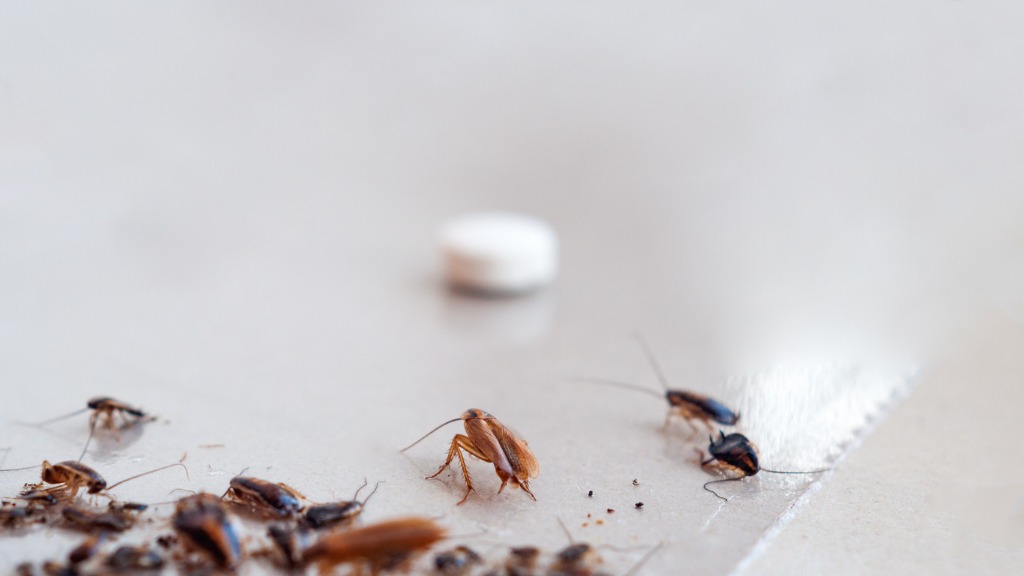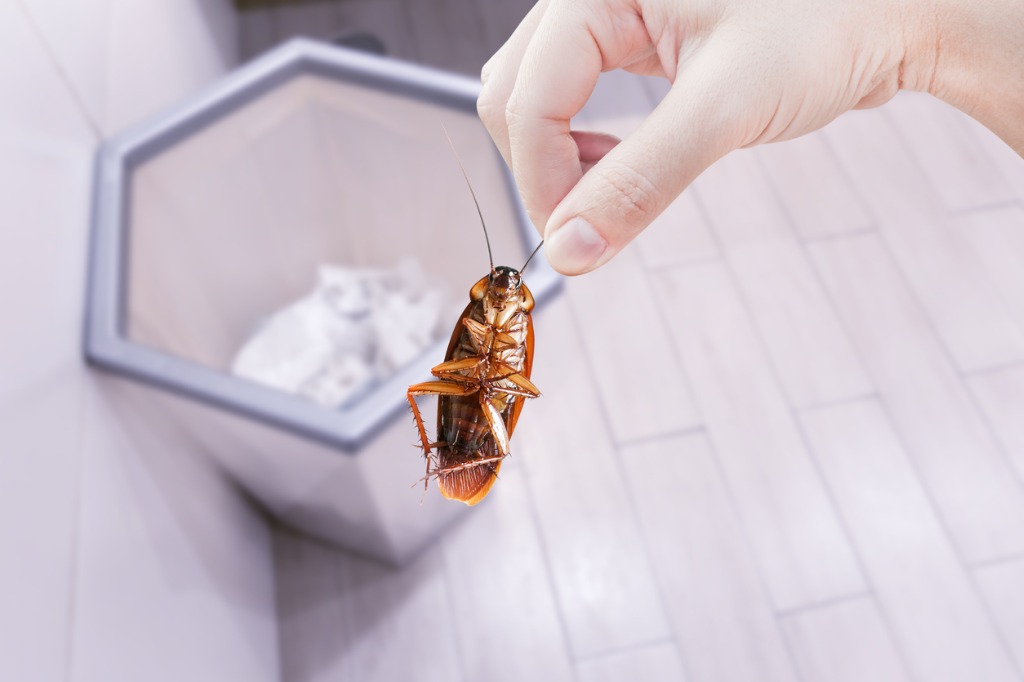Think you know everything there is to know about cockroaches? Think again! These resilient creatures have been around for millions of years, surviving everything from dinosaur extinction to nuclear explosions. In this article, we will uncover 10 mind-blowing facts about cockroaches that will leave you both fascinated and slightly disturbed. From their ability to live without a head for weeks to their impressive speed and agility, these little critters are truly one of nature’s most intriguing creations. So buckle up and get ready to dive into the weird and wonderful world of cockroaches!
Key takeaways
- Cockroaches are ancient insects, with a lineage of over 350 million years, known for their adaptability.
- There are 4,000+ cockroach species, with some being pests and others playing vital roles in ecosystems.
- Cockroaches can run at speeds of up to 3 mph, a critical survival skill for evading threats.
- They can hold their breath for 40 minutes and survive without a head due to a decentralized nervous system.
- Cockroaches exhibit cannibalism under overcrowding or resource scarcity conditions.
- They're exceptional decomposers, recycling nutrients in ecosystems and aiding in nutrient-rich soil creation.
What are cockroaches?
Cockroaches are a group of insects belonging to the order Blattodea, characterized by their flat, oval-shaped bodies, long antennae, and swift movements. They are highly adaptable, omnivorous creatures that have been around for millions of years and are known for their resilience in surviving various environmental conditions. While some species are harmless, others can be pests that infest human dwellings and potentially carry diseases, making them a subject of both fascination and concern.
How many species of cockroaches are there?

As of my last knowledge update in September 2021, there were approximately 4,600 recognized species of cockroaches worldwide. However, it’s important to note that new species may have been discovered since then, and taxonomic classifications can change over time as scientists conduct further research. To get the most up-to-date information on the number of cockroach species, I recommend checking with a reliable scientific database or organization specializing in entomology.
Are cockroaches harmful to humans?
Cockroaches can be harmful to humans in several ways:
- Disease Transmission: Cockroaches are known to carry and transmit various pathogens, including bacteria, viruses, and parasites. They can pick up these pathogens from unsanitary environments and then transfer them to surfaces, food, or utensils, which can potentially lead to foodborne illnesses and other infections.
- Allergies: Cockroach allergens, such as proteins found in their saliva, feces, and shed skin, can trigger allergic reactions in some individuals. These allergies can cause respiratory problems, particularly in people with asthma.
- Asthma: Exposure to cockroach allergens can worsen asthma symptoms in individuals who are already asthmatic. Cockroach allergens can become airborne and can be inhaled, leading to respiratory distress.
- Contamination: Cockroaches are known to contaminate food and food preparation areas with their feces, shed skin, and saliva. This contamination can lead to foodborne illnesses.
- Psychological Impact: For some people, the mere presence of cockroaches can cause psychological distress and anxiety.
10 Fascinating Facts About Cockroaches
1. Ancient Insects
Explanation of cockroaches’ age (over 300 million years)
Cockroaches are ancient insects with a lineage that spans more than 300 million years. This remarkable longevity is the result of several evolutionary advantages:
- Adaptive Evolution: Cockroaches have continuously adapted to changing environments. Over millions of years, they have refined their survival strategies, allowing them to thrive in diverse ecological niches.
- Conservative Body Plan: Unlike some organisms that undergo dramatic morphological changes, cockroaches have maintained a relatively stable anatomical structure over time. This evolutionary conservatism has likely contributed to their resilience.
- Efficient Reproduction: Cockroaches are prolific breeders, producing multiple generations rapidly. This high reproductive rate ensures their continued existence even in challenging conditions.
- Dietary Versatility: Cockroaches are opportunistic feeders, capable of consuming a wide range of organic matter. This dietary flexibility enables them to find food resources in various environments.
- Resilience to Adverse Conditions: Cockroaches exhibit remarkable resilience to harsh environmental factors, including extreme temperatures, radiation, and toxins, which further aids their survival through the ages.
Their resilience through mass extinctions
Cockroaches’ ability to endure mass extinction events, such as the Permian-Triassic and Cretaceous-Paleogene extinctions, is a testament to their extraordinary adaptability and survival tactics:
- Endurance in Harsh Conditions: Cockroaches’ reputation for hardiness allows them to withstand extreme conditions, including temperature fluctuations and exposure to radiation.
- Adaptation to Specialized Habitats: Some cockroach species have evolved to live in underground or secluded environments, providing protection from catastrophic events like asteroid impacts or volcanic eruptions.
- Slow Metabolism: Cockroaches typically have lower metabolic rates compared to many other insects. This energy-efficient trait allows them to survive extended periods without access to food, a crucial advantage during times of scarcity after mass extinctions.
- Generalist Diet: Their ability to scavenge and consume various organic materials ensures they can find sustenance even when traditional food sources are scarce or disrupted by environmental upheavals.
2. Diverse Species
Number of cockroach species worldwide (4,000+)
Cockroaches are a remarkably diverse group of insects, with over 4,000 species identified worldwide. This vast number of species showcases their adaptability to a wide range of habitats and ecological niches. Despite their reputation as pests in some cases, the majority of cockroach species remain relatively inconspicuous and play important roles within their respective ecosystems. The diversity of cockroaches highlights their ability to thrive in various environments, from tropical rainforests to urban areas, making them a fascinating subject of study for entomologists and ecologists.
Distinction between pest and non-pest species
The distinction between pest and non-pest cockroach species is critical for understanding their ecological roles and managing potential infestations. Pest cockroach species are those that have adapted to living in close association with humans and are known to cause problems in human-built environments. These pests include species like the German cockroach (Blattella germanica) and the American cockroach (Periplaneta americana). They can carry diseases, contaminate food, and damage property, making them a nuisance and health concern.
On the other hand, non-pest cockroach species typically inhabit natural environments and play essential roles in ecosystems. They help decompose organic matter, aerate the soil, and serve as prey for various predators, contributing to the balance of their ecosystems. Examples of non-pest cockroaches include the forest cockroach (Ectobius lapponicus) and the wood cockroach (Parcoblatta spp.).
3. Speedy Runners
Remarkable running speed (up to three miles per hour)
Cockroaches are often associated with their remarkable running speed, which can reach up to three miles per hour. This agility is particularly impressive when considering their small size and relatively simple anatomy. Their rapid movement is facilitated by several factors, including well-developed leg muscles, a streamlined body shape, and an efficient nervous system. This ability to scuttle quickly across surfaces is a fundamental aspect of their survival strategy.
Purpose of their speed in survival and hunting for food
Cockroaches’ incredible running speed serves several crucial purposes in their survival and quest for food. First and foremost, it is a key defense mechanism against predators. When threatened, cockroaches can swiftly dart away from danger, seeking refuge in cracks, crevices, or other hiding spots where they are difficult to capture. This agility helps them evade a variety of potential threats, from predators like birds and rodents to human attempts at elimination.
4. Holding Their Breath
Ability to hold their breath (up to 40 minutes)
cockroaches possess an extraordinary ability to hold their breath, which can last for surprisingly long durations, often up to 40 minutes or more. This remarkable adaptation enables them to survive in conditions with low oxygen levels or even temporarily underwater. This capacity to endure extended periods without oxygen is a testament to their resilience and ability to thrive in diverse environments.
Adaptation for surviving in low-oxygen environments
The ability of cockroaches to hold their breath is a critical adaptation for their survival in various low-oxygen environments, and it is made possible through a combination of physiological and behavioral mechanisms:
- Respiratory Flexibility: Cockroaches possess a highly efficient respiratory system that allows them to extract oxygen from the air efficiently. When oxygen levels become scarce, they can slow down their respiration rate or close their spiracles (tiny openings in their body) to minimize oxygen loss.
- Anaerobic Metabolism: Cockroaches can switch to anaerobic metabolism when oxygen is limited. This metabolic adaptation allows them to generate energy without relying on oxygen for a short period, although it is less efficient than aerobic metabolism.
- Behavioral Responses: Cockroaches often exhibit behaviors that help them avoid oxygen-deprived conditions. They may seek out well-ventilated areas or retreat to burrows or crevices with better oxygen supply when oxygen levels drop significantly.
- Resistance to Suffocation: Cockroaches are surprisingly resistant to suffocation. Even when exposed to extreme conditions with minimal oxygen, they can endure for extended periods, such as during transportation in sealed containers or when trapped in confined spaces.
5. Headless Survivors
Survival without a head
One of the most astonishing and perhaps eerie characteristics of cockroaches is their ability to survive for an extended period without a head. This phenomenon is possible due to the decentralized nature of their nervous system. Unlike mammals and humans, which have a centralized nervous system primarily located in the brain, cockroaches have a distributed network of ganglia, or nerve clusters, throughout their body segments. The most significant ganglia are located in the thorax and abdomen.
When a cockroach loses its head, it does not die immediately. The primary functions that sustain life, such as respiration, circulation, and some basic reflexes, are controlled by the ganglia in the thorax and abdomen. These ganglia can continue to coordinate essential activities, allowing the headless cockroach to survive for a period ranging from days to weeks, depending on environmental conditions and the specific injury.
Breathing through spiracles in body segments
Cockroaches breathe through a network of small openings called spiracles, which are located on their body segments. The spiracles allow air to enter and diffuse through a series of tubes called tracheae, which transport oxygen to cells throughout the body. This decentralized respiratory system is another factor that contributes to their ability to survive without a head.
Even after decapitation, the spiracles in the thorax and abdomen remain functional. These spiracles continue to allow the passage of air, facilitating respiration and oxygen delivery to the cockroach’s cells. While the headless cockroach may lack the ability to engage in complex behaviors and sensory perception (since the head contains sensory organs and the brain), it can still perform basic functions, including moving, responding to external stimuli, and maintaining vital bodily functions.
6. Cannibalistic Tendencies

Occurrence of cannibalistic behavior
Cannibalism is a notable aspect of cockroach behavior, particularly in certain species and specific circumstances. While not all cockroaches exhibit cannibalistic tendencies, it is relatively common in various contexts.
- Intraspecific Cannibalism: Cockroaches of the same species sometimes engage in intraspecific cannibalism, which means they eat members of their own species. This behavior can occur under conditions of overcrowding, resource scarcity (such as limited food or water), or as a result of territorial disputes. It’s most commonly observed in pest species like the German cockroach.
- Interspecific Cannibalism: In some cases, different cockroach species may engage in interspecific cannibalism, where one species preys upon another. This typically occurs when one species outcompetes or encounters another species in its habitat, leading to predation.
Triggers and conditions for cannibalism
Several triggers and conditions can lead to cannibalistic behavior in cockroaches:
- Overcrowding: High population density can lead to competition for limited resources, including food, water, and shelter. When resources become scarce due to overcrowding, cockroaches may resort to cannibalism as a means of reducing competition.
- Food Scarcity: In environments where food sources are limited or inconsistent, cockroaches may turn to cannibalism as an alternative food source. This is particularly common in laboratory settings where cockroaches are provided with minimal or no food.
- Territorial Disputes: Cockroaches can be territorial creatures, and disputes over territory or access to hiding places may escalate to cannibalistic behavior, especially when two individuals encounter each other in confined spaces.
- Injury or Weakness: In some cases, injured or weakened cockroaches may become cannibalized by healthier conspecifics. This behavior is a way to remove weak individuals from the population, reducing the chances of disease transmission or resource consumption by individuals unlikely to survive.
- Stress and Aggression: Stressful conditions can increase aggression among cockroaches, leading to cannibalism. Factors like temperature extremes, exposure to chemicals, or other external stressors can trigger aggressive behaviors.
7. Fantastic Regenerators
Regeneration of lost limbs
Cockroaches possess a remarkable ability to regenerate lost limbs, a phenomenon that has intrigued scientists for years. This process begins with molting, a regular part of their growth cycle. During molting, they shed their old exoskeleton, revealing a soft, pliable new one beneath. This is when the magic of regeneration begins.
Within the regenerating limb, specialized cells called blastemal cells are activated. These cells have the potential to develop into various tissue types needed to reconstruct the missing limb, including muscles, nerves, and cuticle. Over time, these blastemal cells proliferate and differentiate, giving rise to the new limb’s structures. Gradually, the regenerated limb matures and recovers functionality, becoming virtually indistinguishable from the original limb.
Applications and research in regenerative medicine
Cockroaches’ astonishing limb regeneration ability has not gone unnoticed in the field of regenerative medicine. While the specifics of cockroach regeneration are not directly applicable to humans, they offer valuable insights and inspiration for researchers in this field. One promising avenue is the study of stem cells, as the cockroach’s regeneration process heavily involves stem cell activation and differentiation. Understanding these mechanisms could inform efforts to harness stem cells for human tissue repair.
8. Clean Eaters
Grooming habits of cockroaches
Cockroaches are known for their meticulous grooming habits, which play a crucial role in maintaining their hygiene and overall well-being. These habits are essential for their survival, especially given their tendency to inhabit environments that may be filled with pathogens and contaminants. The grooming process involves several steps:
- Antennal Cleaning: Cockroaches begin by cleaning their antennae, which are essential sensory organs. They use their forelegs to stroke their antennae, removing dust particles, debris, and any foreign substances that may have adhered to them.
- Cleaning of Mouthparts: Next, cockroaches clean their mouthparts, including their mandibles and maxillae. These mouthparts are crucial for feeding, so keeping them clean and functional is essential.
- Cleaning of Legs: Cockroaches then move on to cleaning their legs. This is particularly important as their legs come into direct contact with the surfaces they walk on, potentially picking up contaminants and pathogens. The grooming process helps remove these substances and maintains the cleanliness of their legs.
- Cleaning of Other Body Parts: They continue by grooming other body parts, including the abdomen and wings (if present). Ensuring these areas are free of dirt and contaminants is essential for their overall cleanliness.
Cleaning of antennae and body
The cleaning of antennae and body is a precise and systematic process for cockroaches:
- Antennal Cleaning: Cockroaches use their front legs, which are equipped with specialized sensory hairs, to clean their antennae. They meticulously stroke each segment of their antennae to remove particles and maintain the sensitivity of these crucial sensory organs. Clean antennae are vital for detecting chemical cues, finding food, and navigating their environment.
- Cleaning of Body Parts: After attending to their antennae, cockroaches proceed to clean other body parts, such as their mouthparts and legs. This process involves using their legs to sweep across these body regions, removing debris and contaminants. Keeping their mouthparts clean ensures efficient feeding, while clean legs are essential for maintaining a hygienic environment and preventing the ingestion of harmful substances.
9. Omnivorous Appetite
Broad diet, including unusual items
Cockroaches are renowned for their omnivorous appetite and their ability to consume a wide variety of foods, including some rather unusual items. Their diet is remarkably adaptable, and they are known to feed on:
- Organic Matter: Cockroaches are opportunistic feeders, primarily consuming decaying organic matter such as fallen leaves, rotting wood, and dead insects. They play a crucial role in breaking down and recycling organic materials in their ecosystems.
- Starches and Sugars: Cockroaches are attracted to starchy and sugary foods, making them common pests in homes and businesses where they may consume human food items like bread, cereals, sweets, and spilled sugary beverages.
- Proteins: They are not selective when it comes to protein sources and will eat both animal and plant-based proteins. This includes scavenging on dead animals, including other cockroaches, if the opportunity arises.
- Non-Food Items: In some instances, cockroaches have been observed consuming non-food items such as paper, glue, and bookbindings. While this behavior is not typical, it highlights their adaptability and ability to find sustenance in unconventional places.
Recycling of nutrients through consumption
Cockroaches play a crucial role in nutrient recycling within ecosystems. Their ability to consume and digest a wide range of organic materials, including decaying plant matter and dead animals, contributes to the decomposition process. This decomposition results in the breakdown of complex organic compounds into simpler forms, releasing nutrients back into the environment.
As scavengers and detritivores, cockroaches help break down organic matter, returning valuable nutrients like nitrogen, carbon, and phosphorus to the soil. This nutrient recycling benefits plant growth and the overall health of ecosystems.
Furthermore, the consumption of decaying matter by cockroaches can help reduce the potential spread of disease by accelerating the decomposition of dead organisms, which might otherwise serve as breeding grounds for harmful pathogens.
10. Important Decomposers
Ecological role as decomposers
Cockroaches play a vital ecological role as decomposers in various ecosystems. As scavengers and detritivores, they are essential for breaking down organic matter and facilitating the decomposition process. Their diet includes decaying plant material, fallen leaves, rotting wood, and dead insects, among other organic materials.
Cockroaches excel at consuming and digesting complex organic compounds found in decaying matter. By feeding on this material, they accelerate its breakdown into simpler forms. This decomposition process is crucial for the efficient recycling of nutrients in ecosystems.
Contribution to nutrient recycling in ecosystems
Cockroaches contribute significantly to nutrient recycling in ecosystems through their feeding and digestive activities. Here’s how they aid in this essential process:
- Nutrient Release: Cockroaches digest the organic matter they consume, breaking down complex molecules into simpler forms. As a result, nutrients like nitrogen, carbon, phosphorus, and others are released from decaying material.
- Soil Enrichment: The nutrients released by cockroaches through their feeding and digestion are returned to the environment, primarily to the soil. These nutrients enrich the soil, making it fertile and suitable for plant growth.
- Plant Nutrition: The nutrient-enriched soil supports healthy plant growth. Plants take up these recycled nutrients, which are essential for their development and reproduction. This, in turn, supports the entire food chain, as plants are the primary producers that sustain herbivores, omnivores, and carnivores in the ecosystem.
- Reducing Organic Waste: Cockroaches’ consumption of decaying matter also helps reduce organic waste buildup in the environment. By breaking down dead organisms and plant debris, they prevent the accumulation of material that could otherwise harbor harmful pathogens or disrupt the ecosystem’s balance.
Conclusion
Cockroaches are truly fascinating creatures with a variety of unique characteristics that make them both intriguing and resilient. From their remarkable ability to survive extreme conditions to their surprising intelligence and adaptability, there is much more to these insects than meets the eye. While they may be widely disliked or feared by many, it is important to appreciate the vital roles they play in ecosystems and the valuable contributions they have made to scientific research. So next time you come across a cockroach, take a moment to marvel at its remarkable abilities and remember that there is always something new and interesting to learn about the world around us. Embrace curiosity and explore the numerous wonders of nature!
FAQs
How long have cockroaches been on Earth?
Cockroaches have been on Earth for over 350 million years, making them one of the oldest known insect species. They have survived and adapted through countless geological and environmental changes, showcasing their remarkable resilience and evolutionary success. Their lineage predates even the age of dinosaurs, a testament to their enduring presence in Earth’s history.
Do cockroaches have a strong resistance to radiation?
Yes, cockroaches have a remarkable resistance to radiation. Their ability to withstand high doses of radiation is due to their simple physiology, slower cell division rates, and efficient DNA repair mechanisms. This resilience has made them a subject of scientific interest for studying radiation’s effects on living organisms and its potential applications in fields like space exploration.
What do cockroaches eat?
Cockroaches are omnivorous insects and can eat a wide variety of foods. They typically consume organic matter, including decaying plants, fungi, and dead animals. In human environments, also they are known to feed on crumbs, food scraps, grease, and even paper products. Their adaptable diet contributes to their ability to thrive in diverse habitats.
Can cockroaches survive extreme conditions?
Yes, cockroaches are known for their remarkable ability to survive extreme conditions. They can endure extreme temperatures, both hot and cold, for extended periods. They can also survive without food for weeks and without water for several days. Additionally, cockroaches can withstand high levels of radiation and have a resistance to many common pesticides, making them highly adaptable and resilient insects.
Are cockroaches social insects?
Cockroaches are not considered social insects; they are primarily solitary in nature. They do not form organized colonies or display cooperative behaviors like ants or bees. Instead, they tend to inhabit areas with access to food and shelter individually, without a complex social structure. Their survival strategy relies more on adaptability and resilience in various environments.

